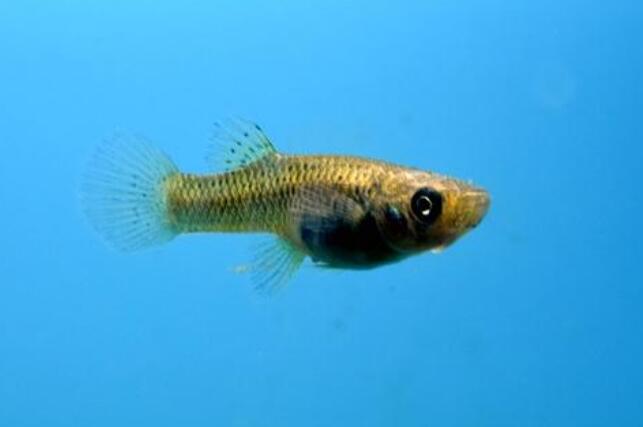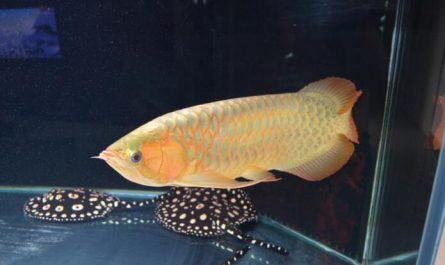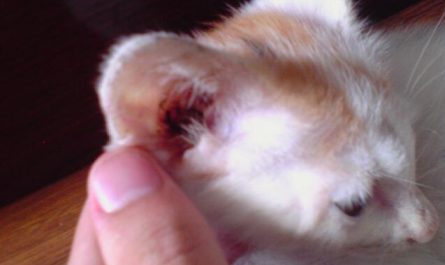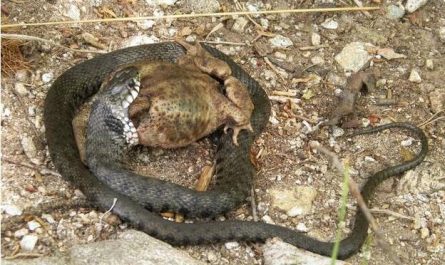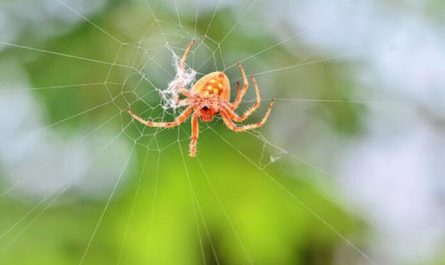The reason why fish are not afraid of cold in cold water
The fish relies on its own blood to regulate its body temperature and adapt itself to temperature changes. The body temperature of fish changes with the temperature of the water. When the water is very warm, the body of the goldfish will also become very warm; when the water becomes cold, the body temperature of the goldfish also drops, roughly the same as the temperature of the water. Fish are highly adaptable to water temperature, so they can live sturdily regardless of whether it is in a cold climate with freezing point or in heat and heat exceeding 30°C. Moreover, at low temperatures, the fish’s reproductive function is more developed; if it is kept warm all the year round, it will cause it to fail to lay eggs.
In the cold winter, a variety of organisms such as whitebait and Antarctic cod can still survive when their body fluid reaches minus 2 degrees Celsius. It turns out that they all make antifreeze proteins to help them survive in ice water. This antifreeze protein prevents the massive formation of ice crystals by attaching to the ice crystals and forcing them to change shape—just like putting a stone on a pillow and the pillow is deformed. In this way, even if the body temperature of the fish is below zero, the body fluid will not turn into ice crystals due to the effect of the antifreeze protein, and the fish can survive.
Every animal has a life temperature limit it can endure, but the endurance is different. Like tropical fish, the suitable temperature for life is relatively high, and it will be too cold to bear. Under the ocean floor where there is no sunlight, there are still fish such as whales and giant billfish. The lower temperature limit they can tolerate is relatively low, but once the temperature falls below the lower limit they can tolerate, they will still suffer. Can’t be frozen to death.
Whitebait, Antarctic cod and many other organisms produce antifreeze proteins to help them survive in ice water. Theoretically speaking, ice crystals will form in their body fluids, rupturing fragile cell membranes and cell tissues. However, antifreeze proteins will adhere to the surface of ice crystals and act as a deterrent.
Leonard Sander and Alexei Tkachenko of the University of Michigan have confirmed how this process happens. When proteins cling to ice crystals, the ice is forced to expand between them. Computer models show that if the expanded ice mass is large enough, the ice will swallow the protein instead of continuing to grow. This delays the expansion of ice crystals. Sandel said: “If the ice formation process is slower, more protein will be attached instead of absorbed, so the ice will not have enough time to’eat’ them. The process is destroyed and the ice stops. Formation.” When ice stops forming, the surrounding liquid will cool below the freezing point. Some animals can still survive when their body fluids reach minus 2 degrees Celsius. The researchers tested this model with proteins of different shapes to figure out how much water can be cooled before ice reforms. The model shows that globular proteins are the most effective because they have no place for ice to attack preferentially, while rod-shaped proteins are not because ice can be easily formed on their ends.
The evolution of fish
Among the five major categories of vertebrates, fish are the lowest and have the earliest time to appear on earth. We are familiar with living fishes, but we are relatively unfamiliar with the early fishes in geological history and how they evolved into living fishes. Let us follow the long river of time and go back.
The earliest known fish fossils were found in the late Cambrian strata about 500 million years ago, but they are only scattered scales, which fail to give us an outline of the fish’s body. A large number of fish fossils were discovered in the Late Silurian and Devonian periods between 400 million and 350 million years ago. Some of these fish fossils are very different from each other in terms of structural features, indicating that many types of fish existed at that time. It is possible that before there is a fossil record, they have parted ways and have gone a long way in their respective evolutionary paths.
The first fish that appeared were jawless fish. As the name suggests, they have no upper and lower jaws, only a funnel-like mouth at the front of the body. This kind of mouth cannot take the initiative to eat, only relying on water to bring tiny organisms into the mouth. What’s more, they don’t have pelvic fins, but they have a membranous exoskeleton that wraps around the body. So jawless fish are also called armored fish. Due to the existence of this exoskeleton, some scholars have disputed: Is cartilage first or hard bone first? In vertebrate embryogenesis, cartilage always appears first, and then hard bone is formed from cartilage. It is generally believed that ontogeny reflects phylogeny. According to this, in the process of biological evolution, cartilage should come first and hard bones later. But the earliest vertebrates appeared first but hard bones. How can this be explained? Some people say that cartilage comes first, but cartilage cannot be preserved as fossils. . What is going on, there is no conclusion.
Jawless fish include two very different categories: Cephalopods and Fins. Each type has its own branches. There are different types of various representatives, and they have flourished for a while. But the good times did not last long. By the middle of the Devonian period (about 350 million years ago), most of them were extinct. Just because some of the characteristics of living lampreys and hagfishes are consistent with those of cephalopods, scholars have speculated that the former may be the living representatives of the latter. According to this, the first class should not be finally extinct. However, from the head crustaceans to lampreys and hagfishes, from the Devonian to modern times for more than 300 million years, no intermediate links have been found (Figure 14). How these parasitic modern jawless fish evolved from their armoured ancestors is still an unsolved case. There is no extinct representative of the fin beetle and is considered an extinct category. However, because some of the characteristics of the heteroformes in the fin beetles are similar to those of later jawed fishes, some people say that the heteroformes may be the distant ancestors of jawed fishes. Whether this is the case, more arguments are needed.
The earliest jawed fish was the scutellum, which not only had upper and lower jaws, but also had double fins. In this way, it may take the initiative to eat. Shieldskin fish are usually divided into group A and carcass. They are both armored and most prosperous in the late Devonian. The former can be represented by tailbone fish, and the latter can be represented by furrow fish. Some people believe that the scutellum may be related to modern sharks, but others believe that it may be more closely related to bony fish.
Platychopsis is also called cartilaginous fish, including sharks and whole heads. Sharks are often considered primitive fish because they have cartilage bones. Cartilage comes first, hard bones come later. However, some people think that the cartilage of sharks is secondary, which is “degraded” from hard bones, with hard bones first and cartilage behind. Aren’t both armor fishes and scutellum fishes have hard bones? The earliest hard bones are truly primitive.
The earliest cartilaginous fish appeared in the early Devonian period (380 million years ago), and the rip shark is often regarded as one of the most primitive representatives, and is probably the ancestor of all sharks. It is a shark that is nearly 1 meter long, with a typical shark body shape-spindle-shaped, large eyes, and close to the snout. Two dorsal fins, with a thick dorsal spur in front of the first dorsal fin. The pectoral fins are particularly large and the pelvic fins are small. The upper and lower lobes of the caudal fin are symmetrical, but the internal structure of the upper spine extends to the end of the upper caudal fin, so the tail is still crooked. The double fin has a wide base and a pointed end, which is a primitive type of fin. The teeth have a “pen holder” shape, with high tips in the center and low on both sides. Starting from the central backbone of rip sharks, which are similar to cartilaginous fishes, various later sharks have evolved, including typical sharks and flat rays. These sharks have been living in the ocean since the Mesozoic, and they have neither been particularly prosperous, but have not been eliminated.
Bonefish is the most advanced fish and the “master” in the waters of the world today. It is generally believed that bony fishes evolved from sticklebacks. The stickleback is an early jawed fish. It appeared in the early Silurian (400 million years ago) and lasted until the Permian (250 million years ago). This is a small fish. It was thought to be related to scutellaria and cartilaginous fishes. Through research on new materials, it was determined that it was related to bony fishes.
There are two major branches of bony fishes, one is called ray-fin fish and the other is called sarcophagus. The former first appeared in the middle Devonian period about 380 million years ago, and passed through cartilage hard scales (partial cartilage, oblique scales, obvious crooked tail), whole bone fish (partial cartilage, oblique scales, The three evolutionary stages of light crooked tail) and bony fishes (sclerophyte, round scale, positive tail) have reached modern fishes. Meat fin fish include total fin fish and lung fish, and total fin fish are divided into spiny fish and fanfin fish. Latimae are the only living representatives of airacanthopanas, while fanfin fish are all fossil species. The latter was once considered the ancestor of terrestrial quadrupeds, but was rejected by Chinese scholars. Lungfish began to appear in the Devonian Period (360 million years ago), and are represented by barramundi, African lungfish and South American lungfish. As the name suggests, lungfish can breathe with the lungs. This is the basic requirement of terrestrial vertebrates. With other characteristics, lungfish was once thought to be the ancestor of terrestrial quadrupeds. Later this “ancestor” status was replaced by fanfin fish with “inner nostrils”. In the 1980s, with the denial of the internal nostrils of fanfin fish, the ancestors of fanfin fish were shaken. So the scholars went back to lungfish to look for the ancestors of terrestrial quadrupeds.
